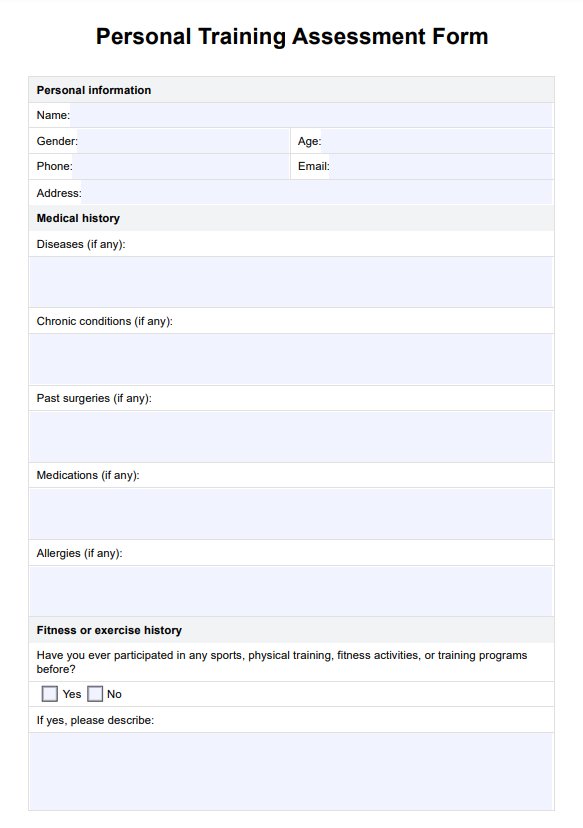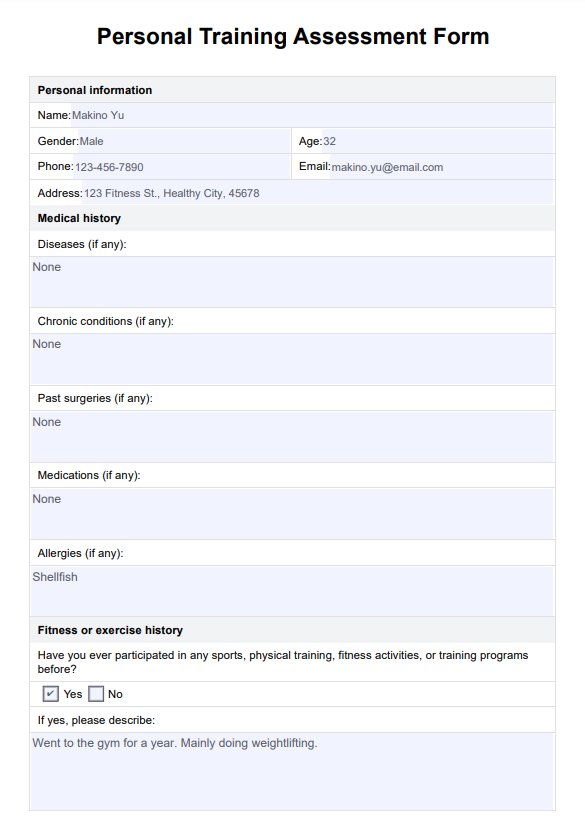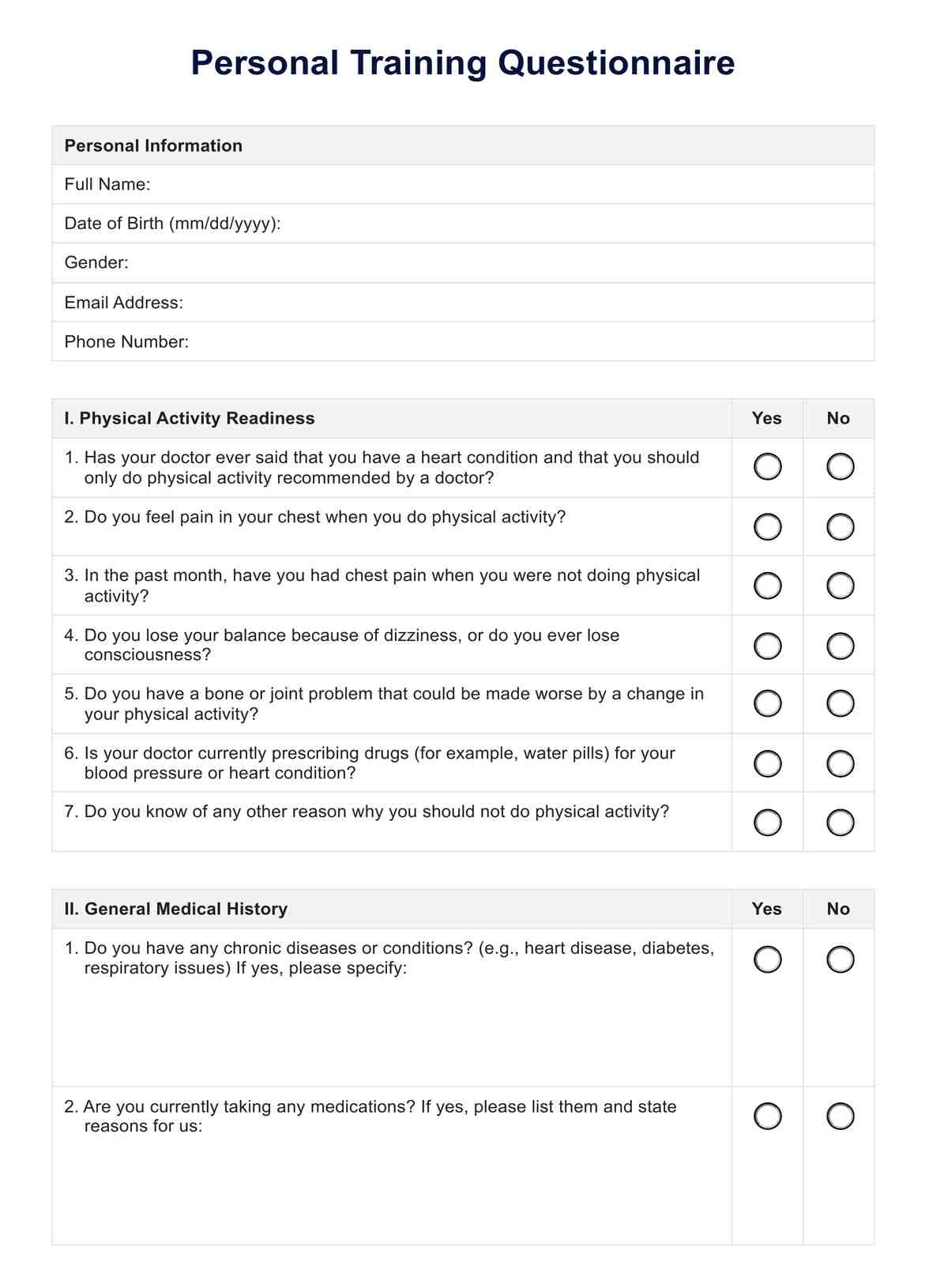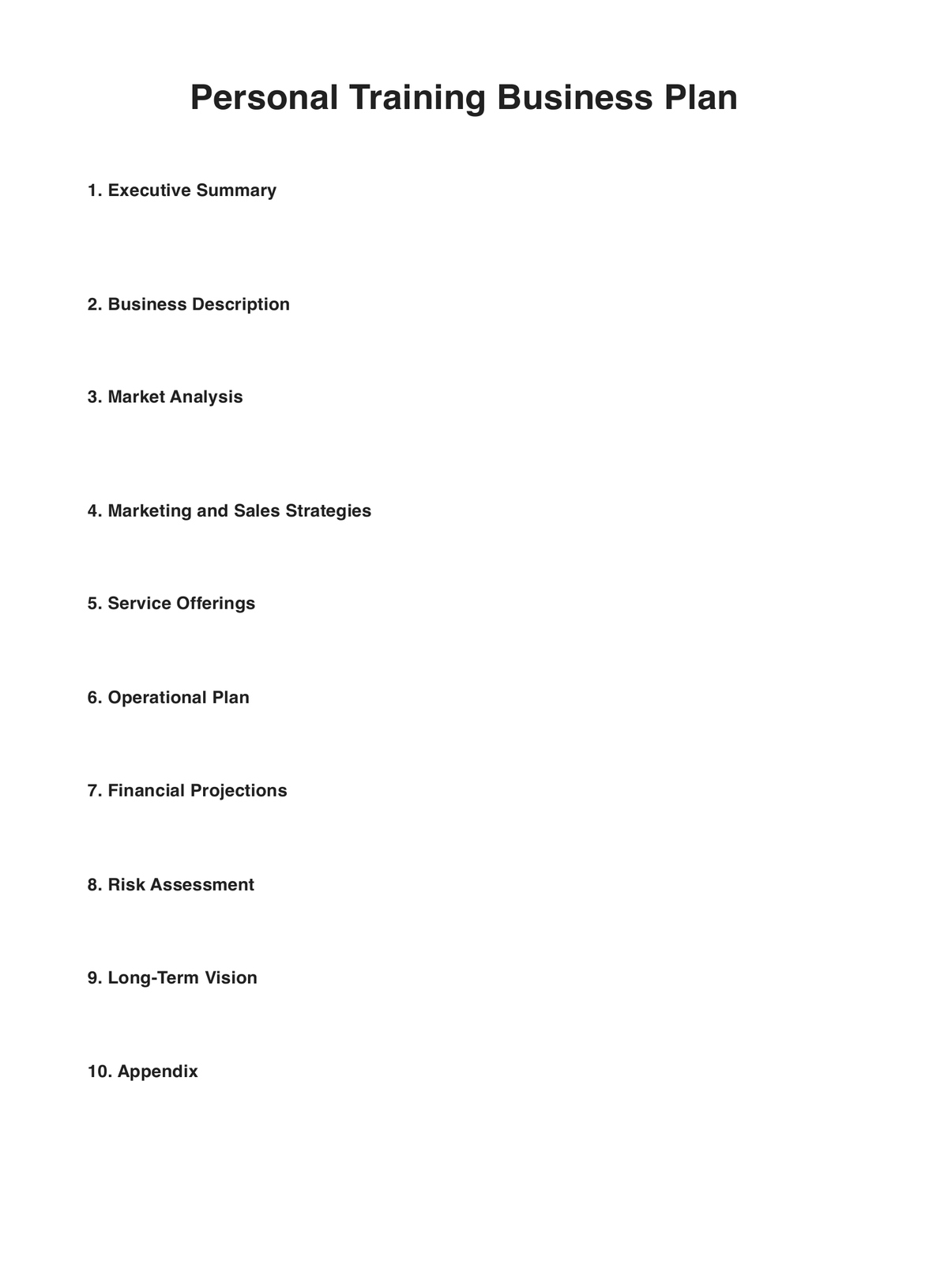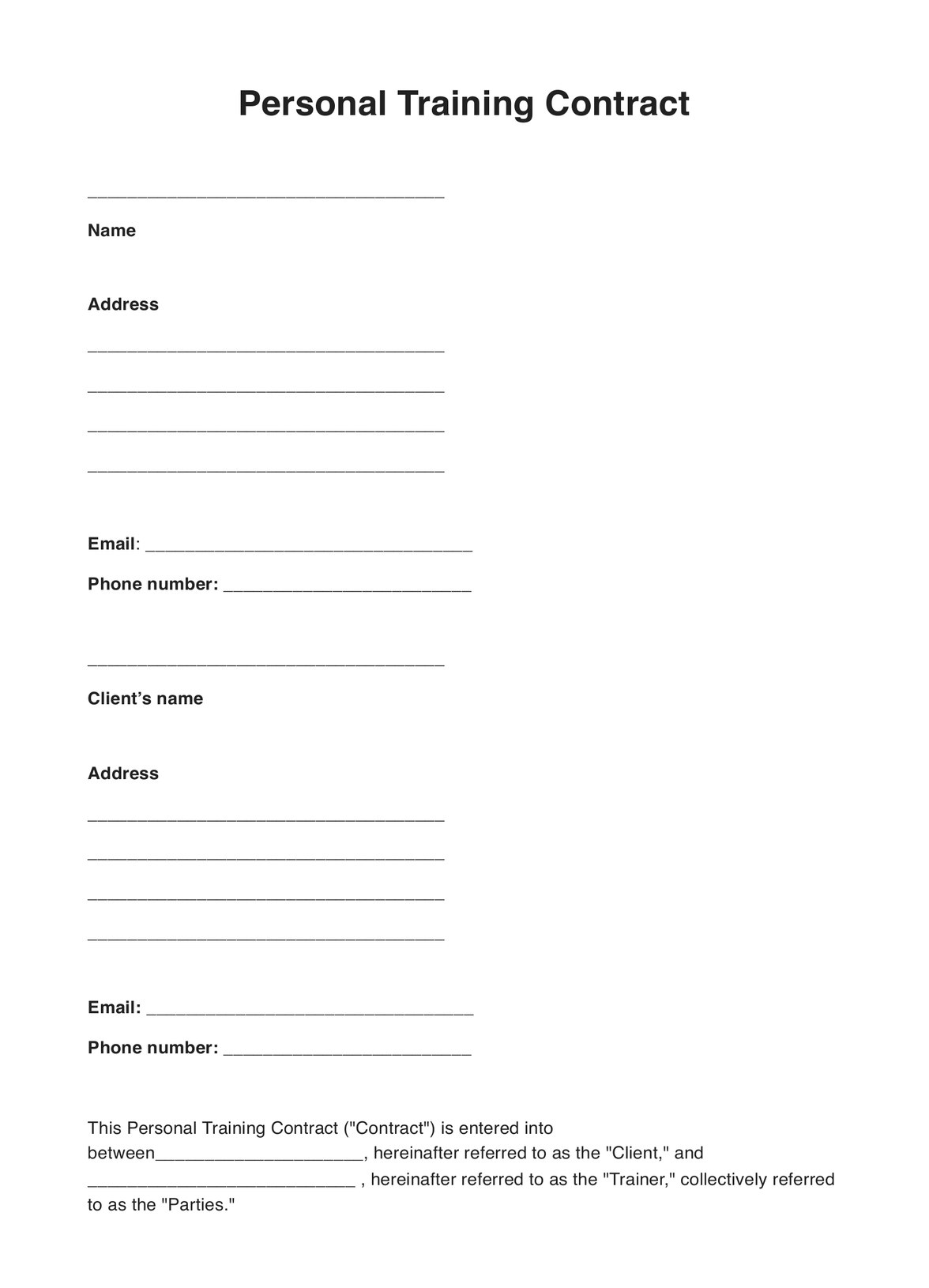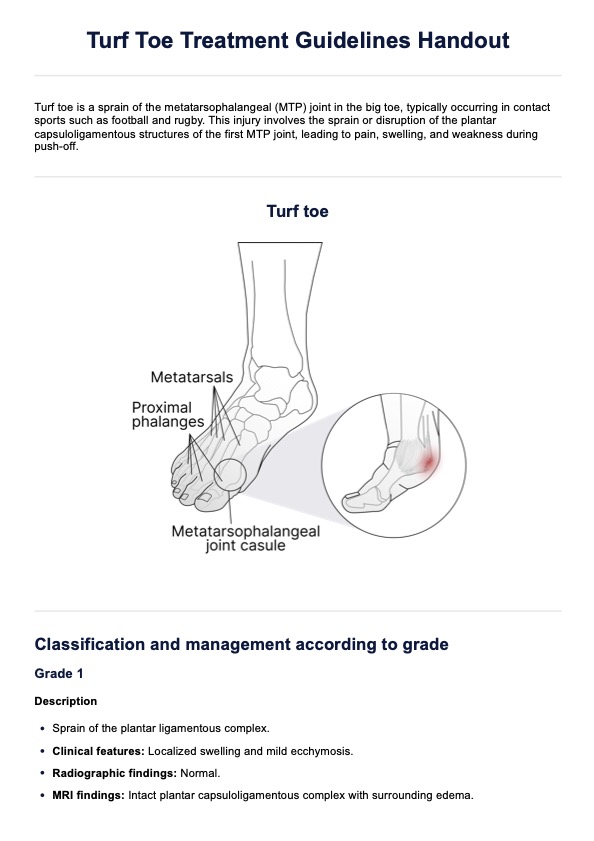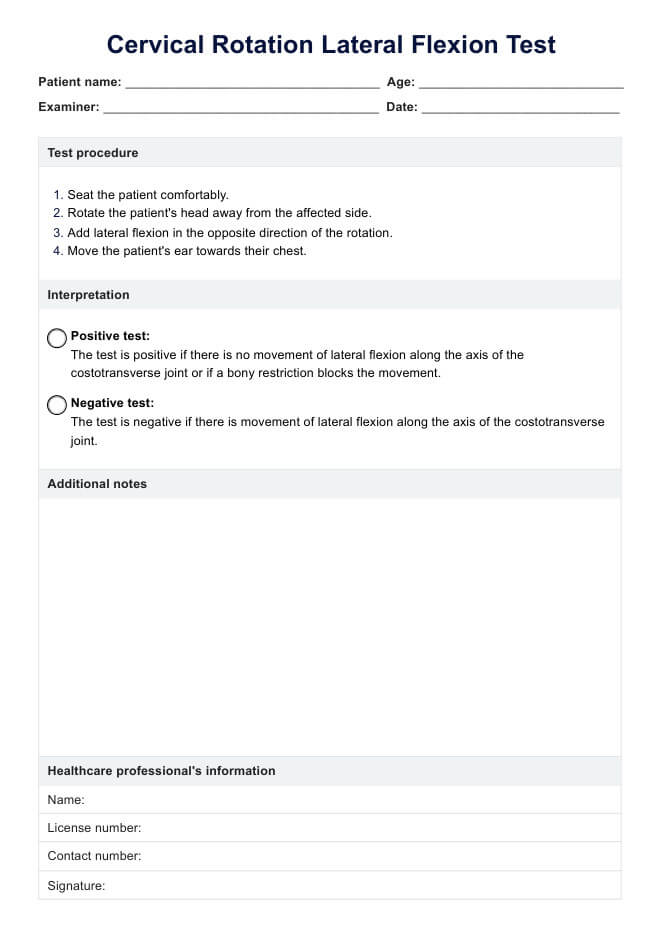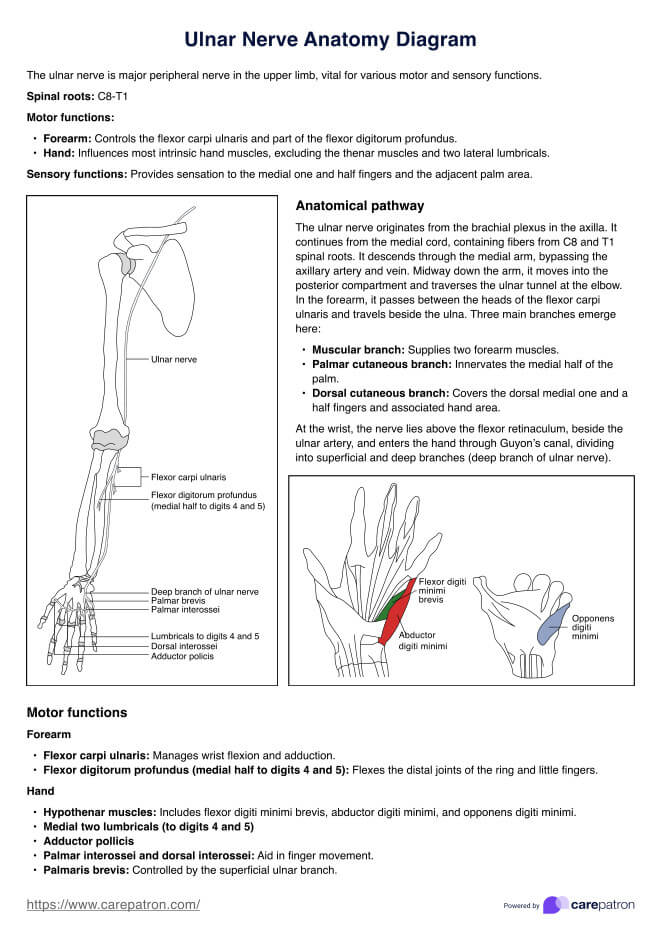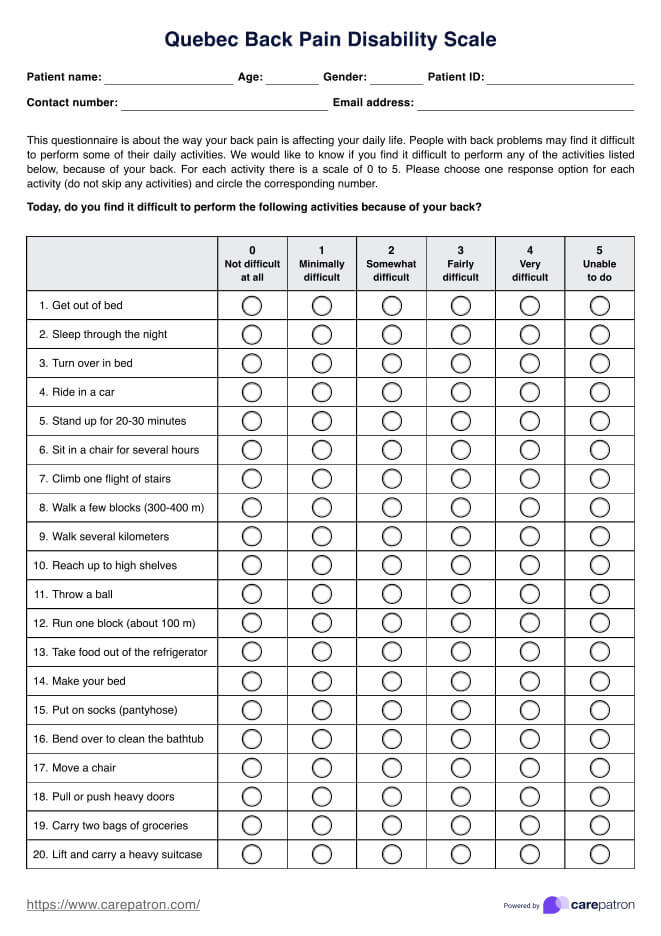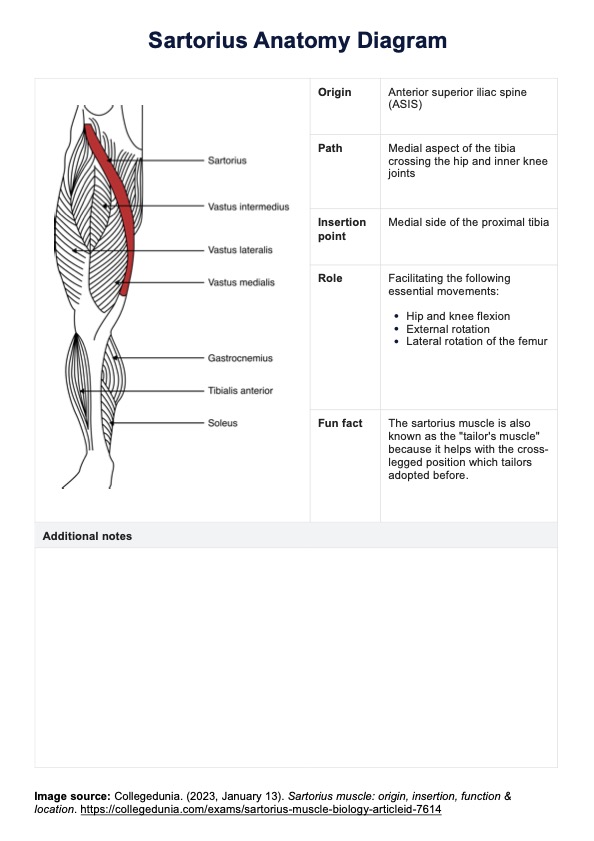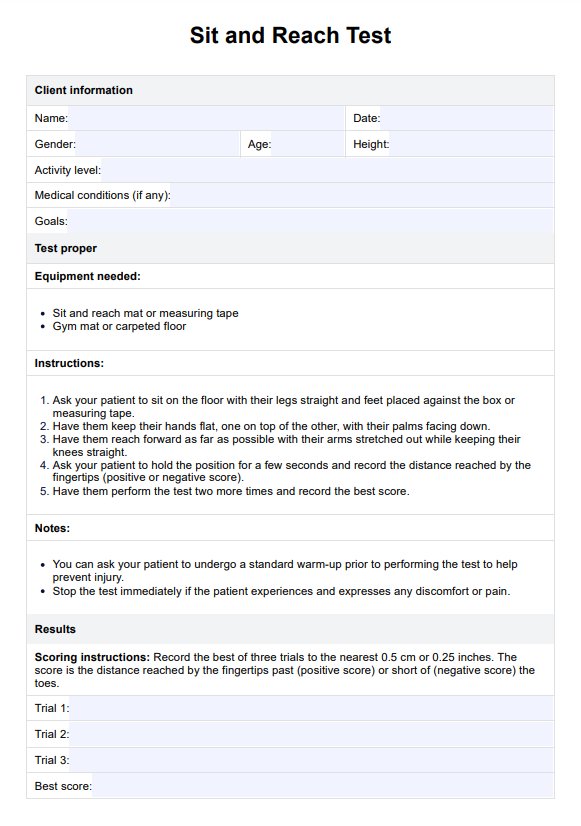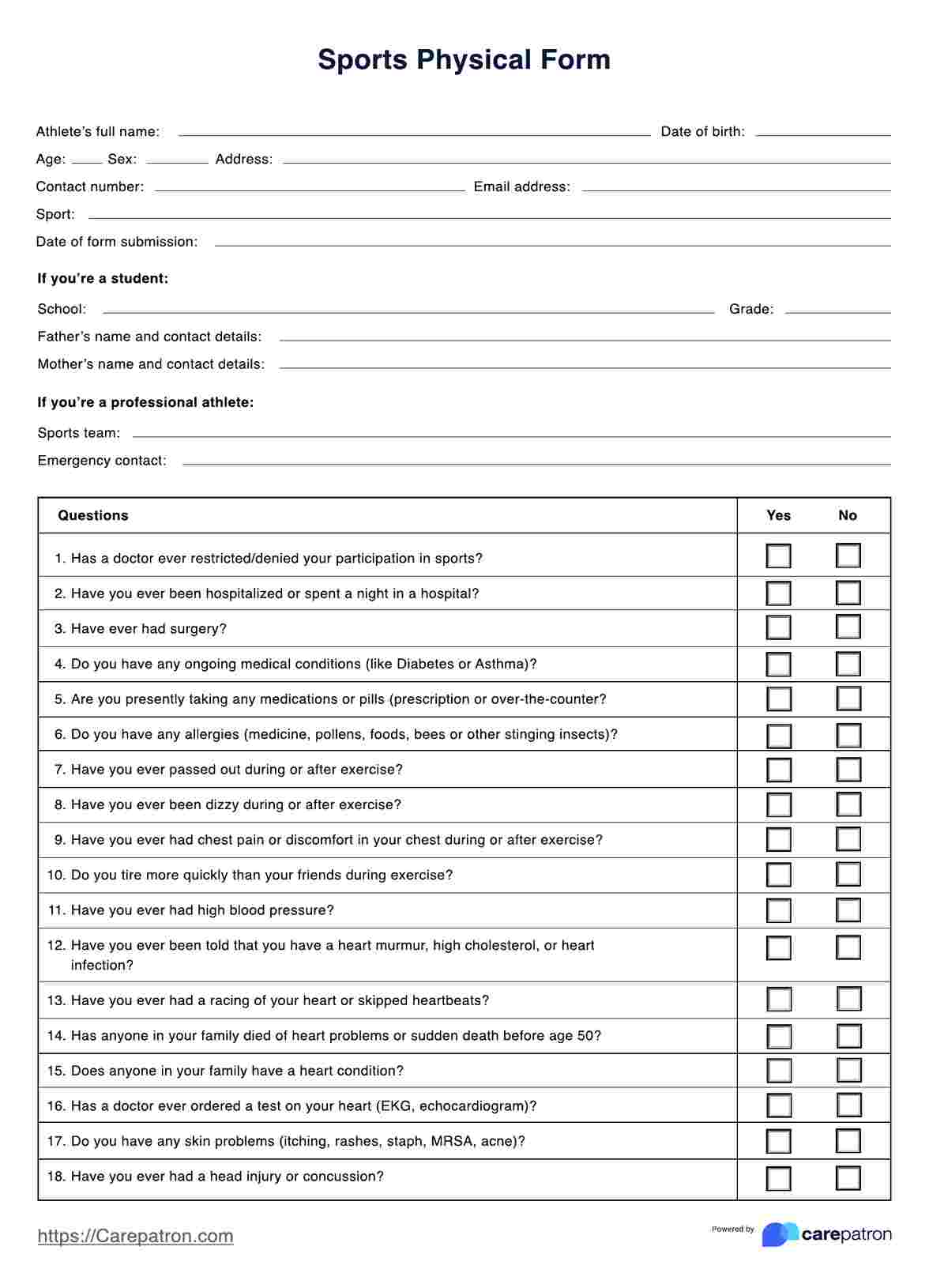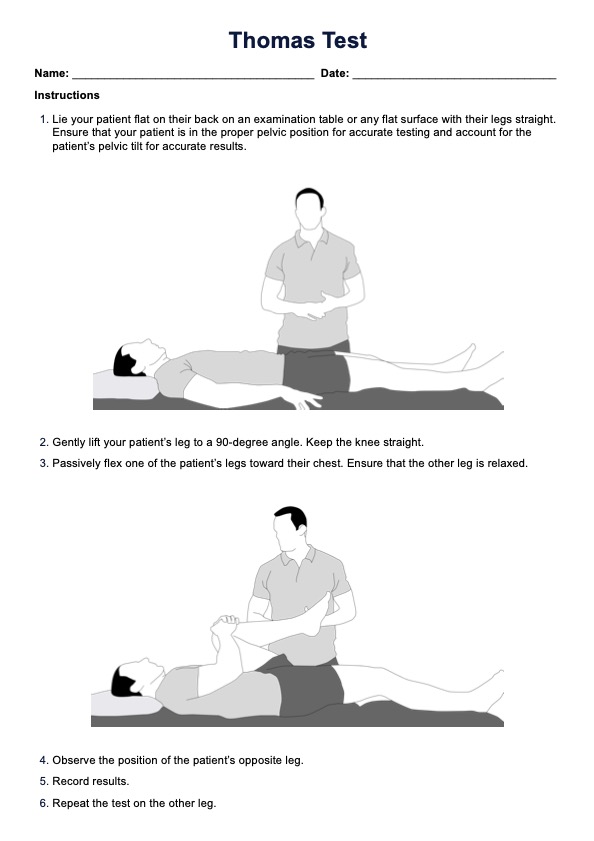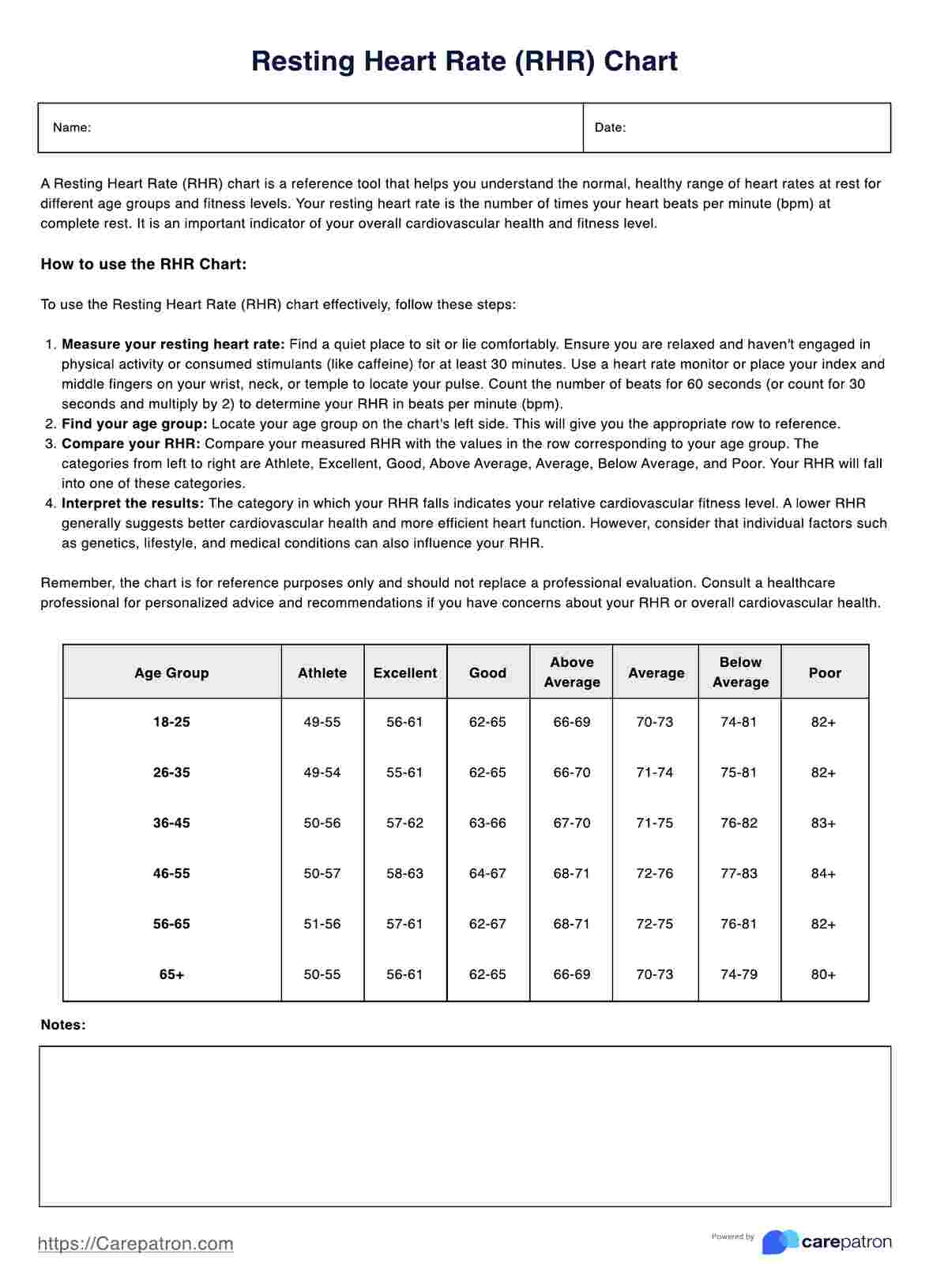Personal Training Assessment Forms
Explore the Personal Training Assessment Form, an essential tool for trainers to evaluate fitness levels and customize workouts. Download a free PDF today.


What is a Personal Training Assessment Form?
A Personal Training Assessment Form or fitness assessment form is a comprehensive and essential tool fitness professionals use to evaluate a client's health and fitness status.
It is a detailed questionnaire covering various aspects of a client's life, including but not limited to medical history, medical conditions, lifestyle choices, previous injuries, fitness experience, and specific goals. By collecting this information, the Personal Training Assessment Form creates a foundational understanding of the client, allowing the personal trainer to develop an effective and safe program with personal training sessions.
This form is a critical first step in personal training, whether for weight loss, rehabilitation, or athletic performance. It ensures that the training aligns with the client's physical condition and objectives, minimizing the risk of injuries and maximizing the potential for success.
Personal Training Assessment Forms Template
Personal Training Assessment Forms Example
How does our Personal Training Assessment Form work?
Personal Training Assessment Forms bridge the trainer and the client, clarifying the client's current fitness state and goals. This is more than just a questionnaire. This collaborative document initiates the dialogue between the fitness professional and the individual seeking guidance. This can be used alongside other tools such as the Physical Activity Readiness Questionnaire (PAR-Q). It also helps establish trust, set expectations, and lay the foundation for a tailored fitness journey.
Here's a step-by-step on how to use our downloadable, free Personal Training Assessment Forms:
Step 1: Gathering information
The personal training client assessment form starts with collecting the client's personal information and medical and lifestyle habits in the health history form section.
Step 2: Identifying fitness goals
Afterward, the client must identify and write down their unique fitness goals, such as weight loss, muscle gain, or improving endurance.
Step 3: Conducting assessments
The form includes a section for the trainer to note down body measurements and assessments such as body fat percentage, allowing for a baseline to measure progress. The fitness trainer must complete this before recommending any training program.
Step 4: Signing consent
Finally, the client must sign the sections with a waiver that needs their consent to acknowledge the risks involved in training.
Step 5: Make notes
Based on the information collected above, you can write down your initial assessment notes and training plan recommendations in the space provided.
When would you use this form?
Using a Personal Training Assessment Form is not just a formal process. It's an essential tool in the development and execution of individualized fitness strategies. It is a foundation that guides the trainer and the client, ensuring a customized approach based on their unique attributes and needs. Here are five scenarios where this invaluable resource becomes pivotal:
New client onboarding
When a new client joins, the Personal Training Assessment Form is a starting point for gathering all necessary information. It ensures the trainer with a personal training business understands the client's medical history, fitness level, preferences, and goals, allowing for the creation of a tailored workout plan.
Post-injury recovery
The Personal Training Assessment Form can double as a personal training injury assessment form and becomes essential if a client has recently recovered from an injury. It helps in carefully assessing the affected area, understanding the extent of recovery needed, and designing a regimen that aids recovery without risking further injury.
Fitness progress tracking
For clients working towards specific goals, regular use of this tool or a Fitness Assessment Form helps track changes, measure progress, and adjust the training plan as needed.
Dietary planning
If nutrition plays a significant part in a client's fitness journey, the form can also collect detailed information about eating habits. This data aids in crafting a personalized nutrition plan aligned with their fitness objectives.
Risk management
For specialized training or training with inherent risks, the form ensures that clients are well informed about potential risks and their consent is documented, protecting both the trainer and client.
Benefits of using a Personal Training Assessment Form template
The Personal Training Assessment Form brings many advantages to the fitness training process. It sets the stage for a successful and safe fitness journey. Here are six benefits of using this template:
Personalized training plans
By understanding the client's unique profile and goals, the personal training client assessment form allows trainers to craft workout routines tailored to individual needs, enhancing effectiveness and motivation.
Enhanced safety measures
The form considers pre-existing health conditions, injuries, and specific physical needs, ensuring exercises that provide benefits without causing harm.
Effective communication
As a dialogue starter, it facilitates a clear understanding between trainer and client, building trust and ensuring alignment in expectations and goals.
Progress monitoring
Establishing a baseline and recording periodic assessments provides a clear path for tracking improvements and adjustments and celebrating successes.
Legal protection
It includes consent forms and precise documentation of known risks, which acts as a legal safeguard, protecting both parties involved.
Time-saving
The form streamlines the client onboarding process by efficiently gathering and organizing information, freeing up more time for actual training.
Commonly asked questions
Personal trainers, fitness coaches, and health professionals, with or without a fitness business, can use these free personal trainer forms to assess and plan individualized training programs.
They are used at the beginning of the training relationship, after an injury, or periodically to assess progress.
These forms are filled out through collaboration between the trainer and client, encompassing personal information, fitness assessments, goals, and consent.


